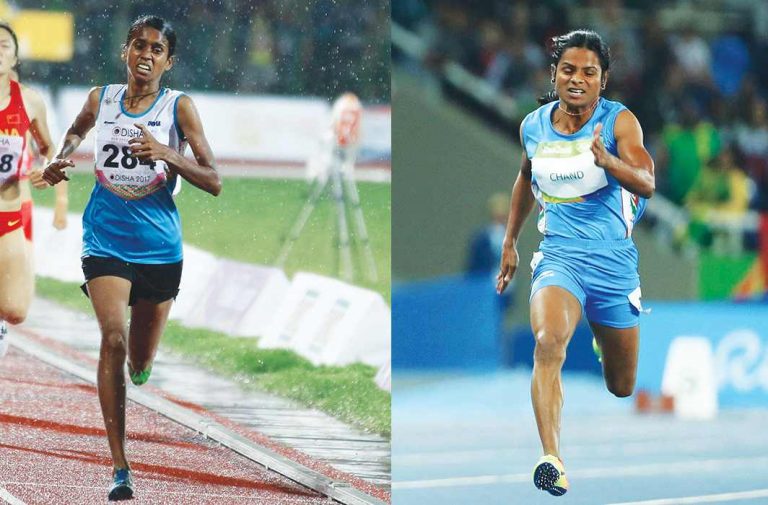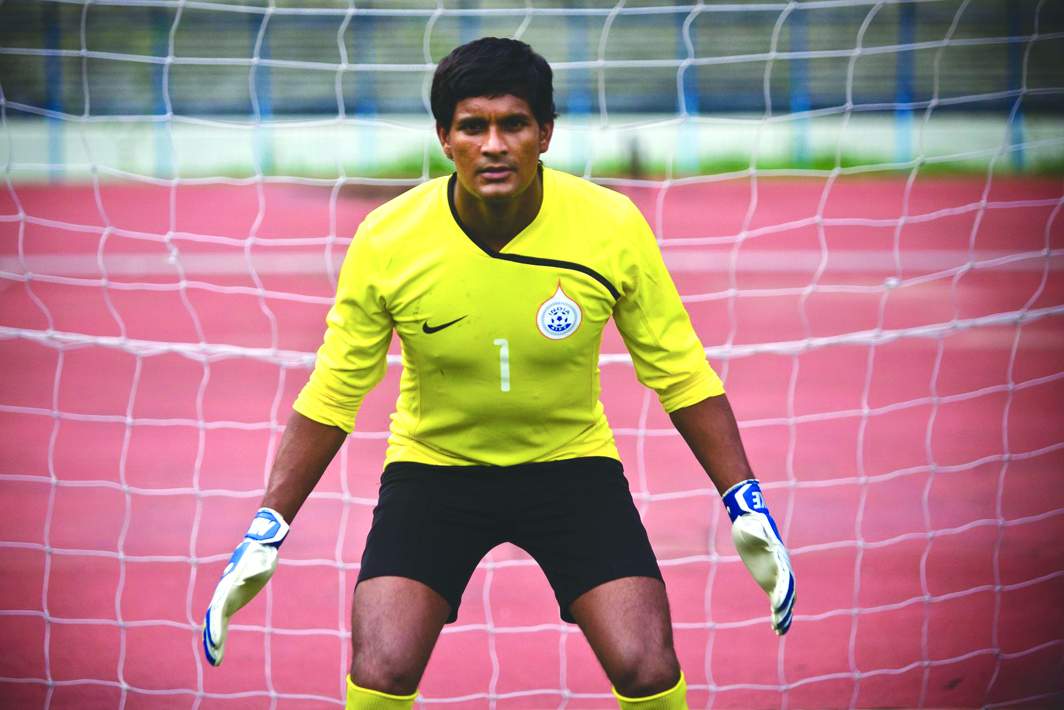
Above: Athlete PU Chitra (left) and ace sprinter, Dutee Chand, were disallowed at different times from competing on important international platforms. Photo: Wikimedia.com and UNI
S Sreesanth is not the only sportsperson who has approached the courts
~By Sujit Bhar
The issue of laws of the game versus the law of the land has been a long standing debate in sporting circles. It is acceptable that when events in the sporting arena overflow into societal areas, the law of the land can take effect quickly. However, as long as incidents stay confined to the playfield, sporting authorities will have the last say.
Recently, certain high-profile issues of the playfield spilled over to the courts. S Sreesanth, former India pace bowler, was jailed on charges of spot-fixing of matches in the IPL, but when a special Delhi court acquitted him for lack of evidence, the BCCI stubbornly refused to lift the life ban it placed on him. So Sreesanth went to court again and the Kerala High Court has directed the Board to end his life ban. The BCCI might appeal, but that is another matter.
Athlete PU Chitra, not allowed to run (1,500m) for India in the London World Athletics Championships by the Athletics Federation of India (AFI) despite winning a gold at the Asian Track and Field Championships in Bhubaneswar just prior to it, went to court too. The Kerala High Court ruled that she should be included in the team, but by then, the last date for entry was over and the International Association of Athletics Federations (IAAF) refused to accept her entry.
Dutee Chand, India’s ace sprinter, and the only Indian woman to qualify for the finals of the 100m at an Olympic Games—PT Usha did not have to qualify—suffers from hyperandrogenism, a physical condition in which there are excessive levels of androgens (male sex hormones such as testosterone) in the female body. She was initially denied permission to take part by the IAAF, so she went to court. This was a famous international case in which a posse of lawyers fought her case and won.
The IAAF relaxed the strictures and she was able to take part in the Rio Olympics. She has also taken part in the London world athletics meet, but the relaxation period runs out in three months, after which she again becomes ineligible.

Increasingly, the two legal forums—in sport and general—are often seen to be in disagreement. Recently, the Indian sports ministry has suggested that doping in sport be made a criminal offence. This will lead to many sporting and legal hurdles. There are nearly 300 incidents of litigation pending against the sports ministry and they range from non-inclusion in a squad to unfair treatment. In many cases, court stay orders have resulted in career hurdles in themselves.
“Such overlaps will keep happening,” says Kuntal Roy, famous athletics coach. He coached heptathlete Soma Biswas to national titles and records and to the Olympics. “It is necessary to find a middle ground so that sportspersons have another appellate body to go to before moving court,” he said.
This becomes necessary. The Kerala High Court’s Justice PB Suresh Kumar, in delivering his interim order told the AFI that the court had to interfere because the Federation wasn’t going by its own rules. In delivering the Sreesanth judgment, Justice A Muhamed Mustaque of the same court observed: “The disciplinary committee (of the BCCI) ought to have been careful in analysing evidence especially when the deal itself had failed to work out.”
Justice Mukul Mudgal whose book Law and Sports in India is famous, has observed that “there is a need for regulation. Regulation is a must, not to curb but to encourage playing”.
However, regulation cannot be the only objective in the highly competitive world of sports today. “There can be no general application of any law in the sporting arena,” says Kuntal Roy. “You have to consider each situation on its merit. Each one could be unique. Moreover, in sports, international laws have to be taken into account. It is essential that national laws of a sport conform to its international counterpart. If not, then there would be consequences that would be detrimental for the athlete.”
There are nearly 300 incidents of litigation pending against the sports ministry and they range from non-inclusion in a squad to unfair treatment.
During the 2004 Federation Cup, ace football goalkeeper Subrata Paul of Mohun Bagan punched at a goal-bound ball, but his punch landed on Dempo’s Brazilian forward Cristiano Júnior instead. The ground lacking basic medical facilities, Júnior died. “This would have been manslaughter, at least as per the laws of the land,” said Roy. “At least, Paul would have been so terribly harassed, his career would have come to an end. That did not happen because it stayed within the playfield. We need the sanctity of the playfield maintained. Any appeal should be to an appellate body within its sphere of influence.”
There is yet another case of foreign footballers who come to play in Indian clubs. Players from countries such as Nigeria, Kenya and Brazil arrive every year and some of them—Chima Okorie, Emeka Ezeugo, Barretto and others have earned fame and money. There are many more, though, who are mid-level players. These are the players who are treated poorly by organisers and clubs and have no redress system to refer their cases to when they are not paid.
An official within the IAF, who refused to be named, because he was not authorised to make comments, pointed out that there was a forum available internationally, the Court of Arbitration for Sport, based in Lausanne. “But it is prohibitively expensive for a poor Indian athlete to approach. The very idea of paying lakhs of rupees from his or her own pocket, and then being present in Switzerland for the hearings sounds so far-fetched for an Indian athlete, he or she never even attempts it,” he said.
That leaves the athlete with the forum of the court. More than the reasonable amount of money involved in filing a case in Indian courts, the biggest advantage is that they are approachable. Also, the faith of the common man in the judiciary is still immense. Possibly that has resulted in the multiple litigations that the sports ministry has been embroiled in.
Moving towards a national sports tribunal, within India’s legal framework, will be the ideal solution, feels Roy.

